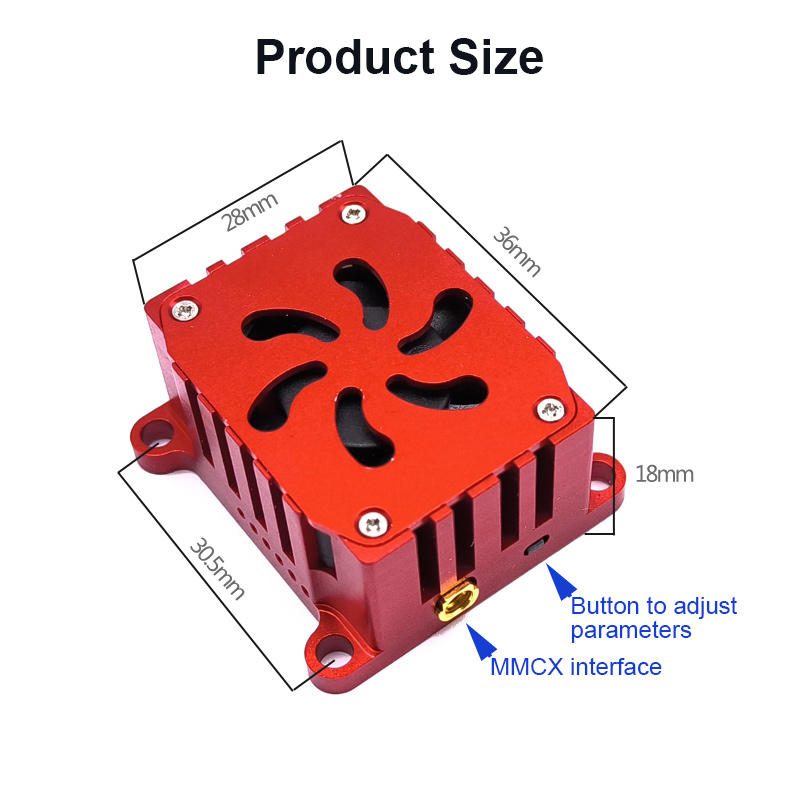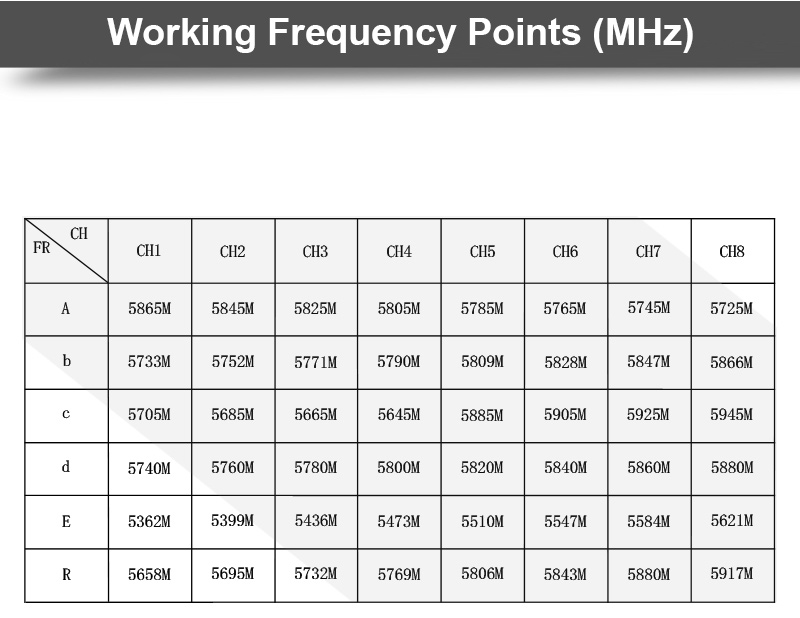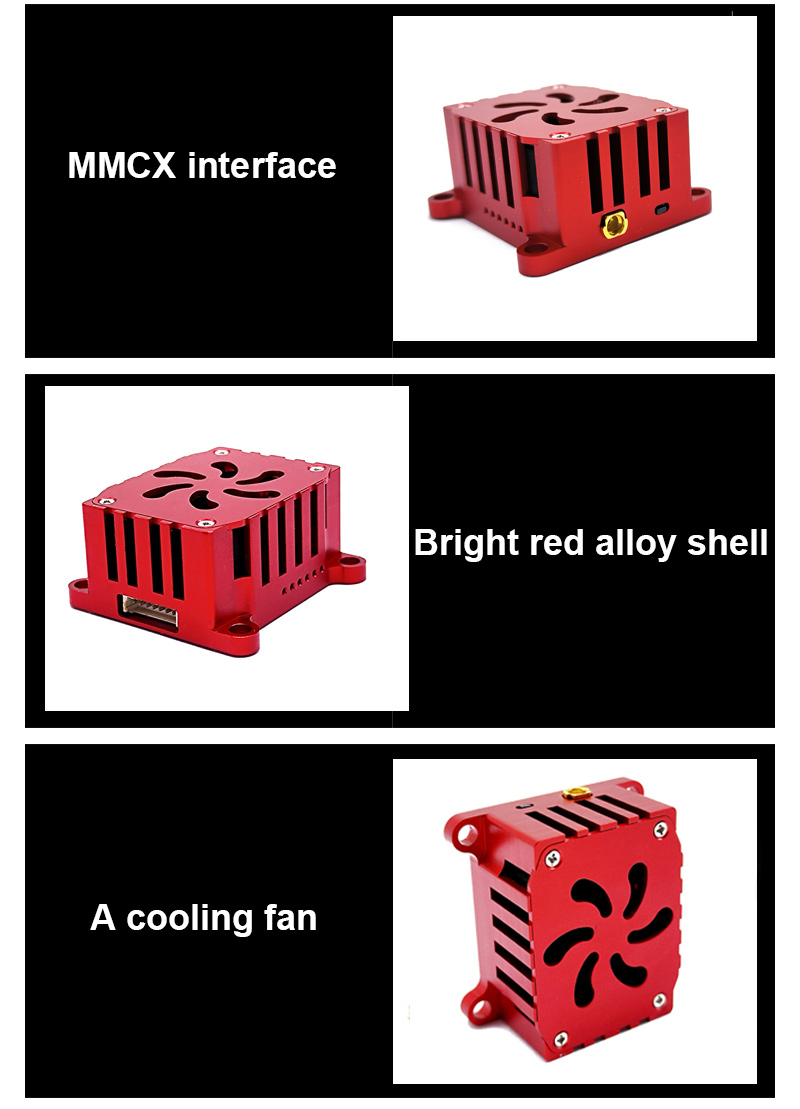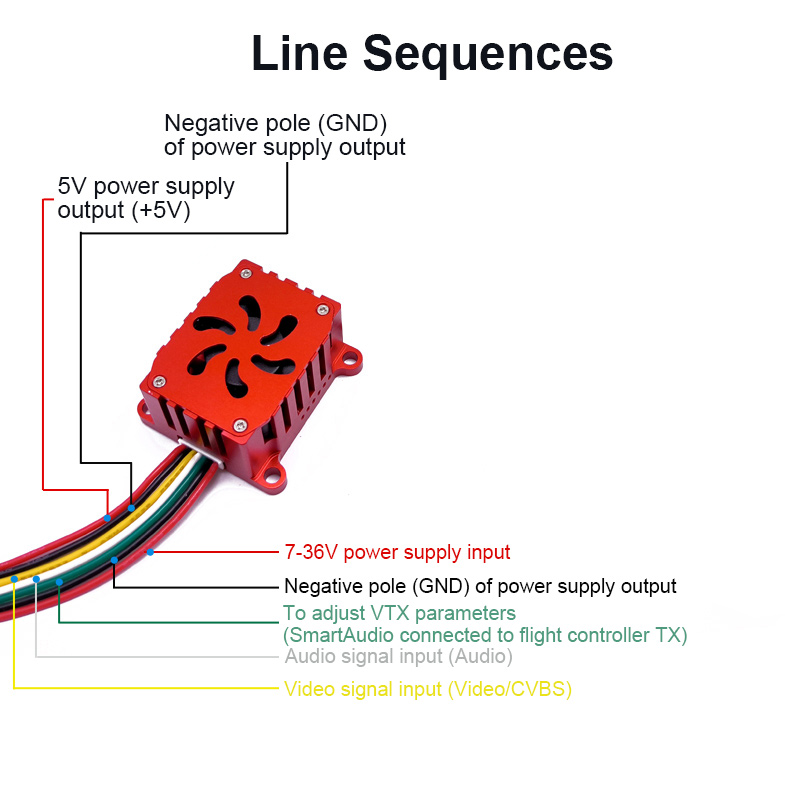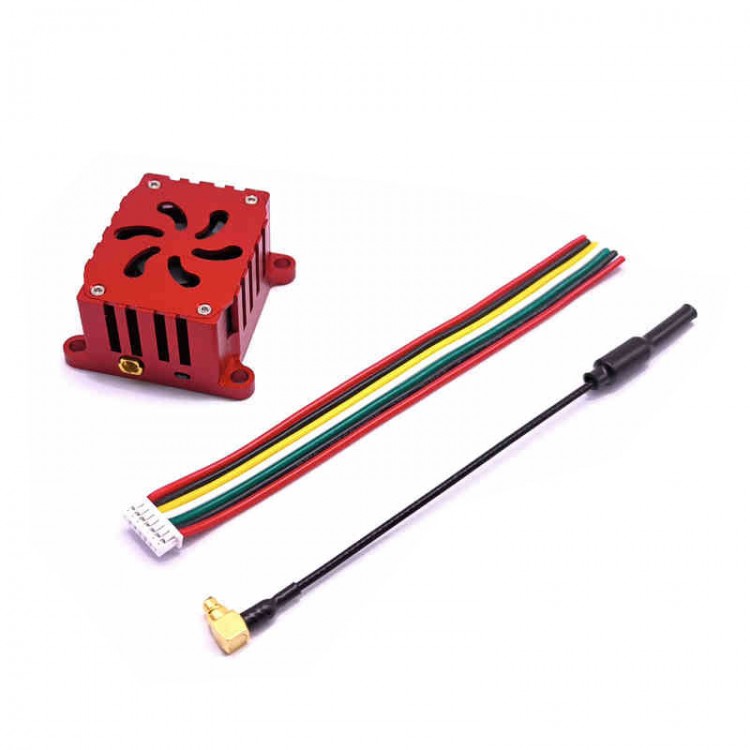
| Quantity | 3+ units | 10+ units | 30+ units | 50+ units | More |
|---|---|---|---|---|---|
| Price /Unit | $48.04 | $47.06 | $45.59 | $43.63 | Contact US |
 5W 15KM 1400MHz Video Data Transmitter Video Data Transmission Module for Drones Vehicles & Boats
$1,853.28
5W 15KM 1400MHz Video Data Transmitter Video Data Transmission Module for Drones Vehicles & Boats
$1,853.28
 5W 15KM 800MHz Video Data Transmitter Video Data Transmission Module for Drones Vehicles & Boats
$1,853.28
5W 15KM 800MHz Video Data Transmitter Video Data Transmission Module for Drones Vehicles & Boats
$1,853.28
 2W 15KM 1400MHz Video Data Transmitter Video Data Transmission Module for Drones Vehicles & Boats
$1,678.38
2W 15KM 1400MHz Video Data Transmitter Video Data Transmission Module for Drones Vehicles & Boats
$1,678.38
1.6W 5.8G FPV VTX Transmitter Video Transmitter (with Metal Shell + Fan) Supports 200/500/800/1600mW
Features:
* 1.6W high-power VTX transmitter
* 200/500/800/1600mW adjustable power
* Cost-effective
* Supports OSD remote control/button to adjust parameters
* Weight: 27.3g (including antenna)
* 30.5*30.5mm hole spacing
* Supports for SmartAudio remote control to adjust parameters
* A cooling fan and a bright red metal housing
* High-power long-distance VTX: suitable for fixed-wing, racing drones, remote control cars, wireless fishing, etc.
* Working power: 4 levels, up to 1.6W continuous
* Working channel: 48CH
* Multiple ways to set parameters: SmartAudio and buttons
* Bright red alloy shell (fashionable)
* With 5V/300mA output
* Input voltage range: DC 7-36V
* Power supply has strong impact resistance
Specifications:
* Working frequency: 5.8G
* Working channels: 48 channels
* Transmitting power: 200/500/800/1600mW
* Working voltage: DC 7-36V
* Working current: 200 mW (340 mA)/500 mW (420 mA)/800 mW (500 mA)/1600 mW (710 mA)
* Antenna: MMCX interface
Package Included:
* 1 x VTX
* 1 x Connection cable
* 1 x Antenna for VTX
Packaging Details:
* Weight: 0.25kg
Note:
* For high-power (greater than or equal to 1W) single VTX or VTX & camera set, the VTX does not have an anti-reverse connection function. Please connect correctly according to the VTX line sequences, otherwise the VTX and related accessories will be burned out due to reverse connection and users should be responsible for the repair costs. The specific details shall be subject to the manufacturer's test report.
* Be sure to screw on the antenna before powering on the VTX transmitter.
FAQ:
Question 1: What is the transmission distance of the VTX transmitter?
Answer: The transmission distance depends on your receiver, transmitting antenna, receiving antenna, electromagnetic environment and shielding. Therefore, we cannot guarantee the transmission distance of the VTX, but can only guarantee that the VTX is of sufficient power. Other things are not guaranteed.
Question 2: Does the VTX transmitter generate a lot of heat when working?
Answer: The video transmitter transmits signals to the surrounding area like a small radio station, so it will generate heat. The transmitter uses a fan and a heat sink to dissipate heat (the 1.2W version does not have a cooling fan), and the transmitter can work stably for a long time. When using the transmitter, try to place it in a ventilated environment. Under such conditions, there is no problem with the video transmitter working for a long time.
Question 3: Can the antenna of the transmitter be replaced with other antennas?
Answer: Yes. Any antenna that supports 5.8G signals is fine. The 2W antenna interface is SMA male connector. The 1.2 W/1.6W antenna interface is MMCX interface.
Question 4: What aircraft is the transmitter suitable for?
Answer: The transmitter is an independent device. You can install it on anything as long as you want to transmit images and there is a camera receiver. You just need to power the VTX transmitter. You need to fix the transmitter.
Question 5: Does it have camera power supply?
Answer: With 5V/500mA output, the VTX transmitter can drive most FPV cameras.
Question 6: Does the VTX transmitter need to be wired?
Answer: The single VTX transmitter needs to be wired. Please connect the wires according to the wiring sequence in the detailed diagram to avoid wrong connection and burning the transmitter.
Button Configuration:
After power on, long press the button to adjust the channel frequency point, channel group and power in a loop. Long press the button to switch (red light), short press the button to switch (blue light), and double press the button to switch to Pit Mode (red light/blue light).
Step 1: Long press the button. When the red light flashes once, you can adjust the channel frequency point (1, 2, 3, 4, 5, 6, 7, 8). At this time, short press the button, and you can switch the channel frequency point. The blue light blinks once to indicate channel frequency point 1, and the blue light blinks several times to indicate the corresponding channel frequency point.
Step 2: Long press the button. When the red light flashes twice, you can adjust the channel group (A, B, C, D, E, R). At this time, short press the button to switch the channel group. The blue light flashes once to indicate channel group A. The number of blue light flashes increases each time, indicating B, C, D, E and R.
Step 3: Long press the button. When the red light flashes three times, you can adjust the power. Short press the button to switch the power. The blue light flashes once for 200mW, the blue light flashes twice for 500mW, flashes three times for 800mW, and flashes four times for 1200mW.
Step 4: After adjusting the parameters, long press the button. At this time, the red and blue lights will stay on, and the module enters the parameter saving mode.
Step 5: Short press the button twice to turn on or off the transmission (Pit Mode). The red and blue lights are on, indicating that it is transmitting. The red and blue lights flash (indicating that the image transmission is turned off: the module is in Pit Mode). Note: In Pit mode, the working distance of the module is only 1-2 meters.